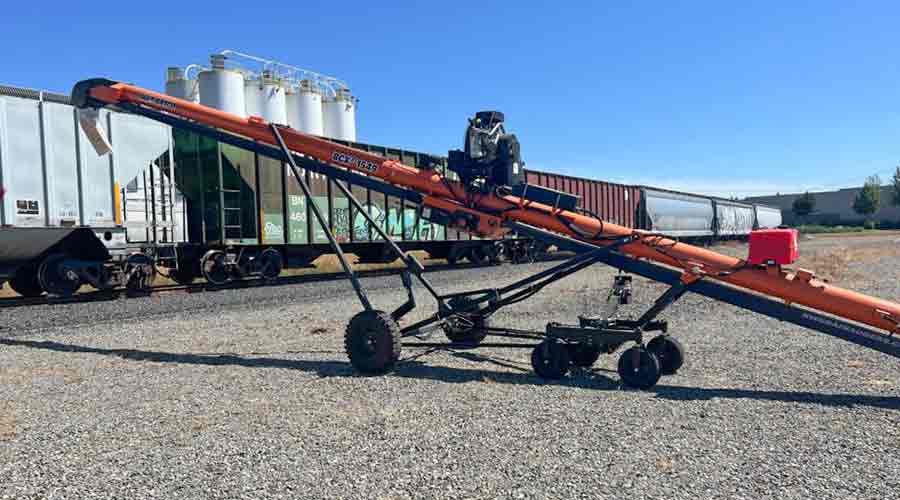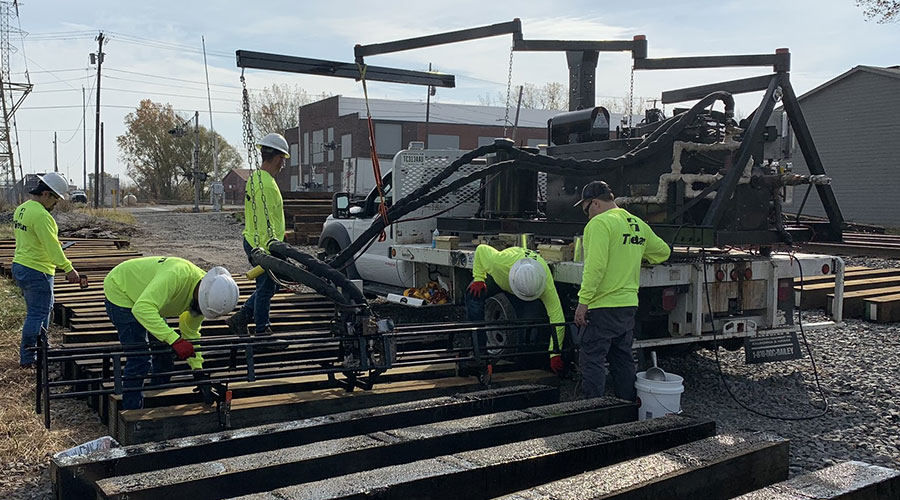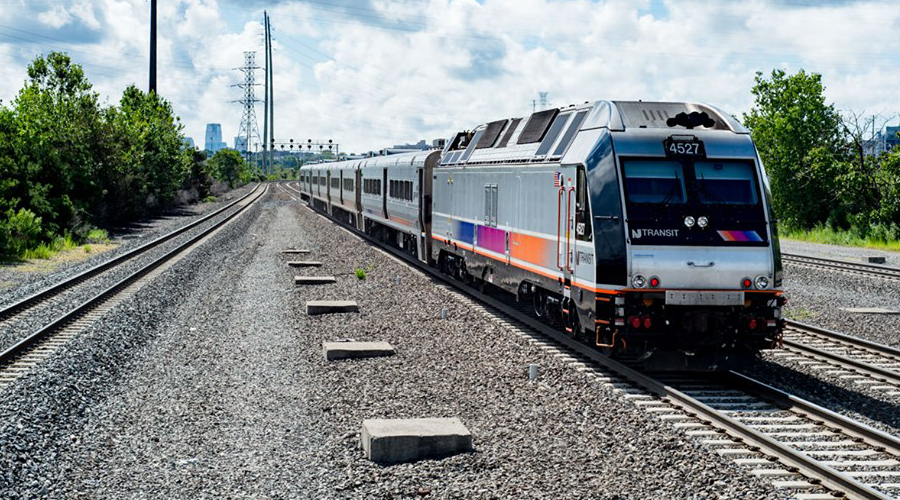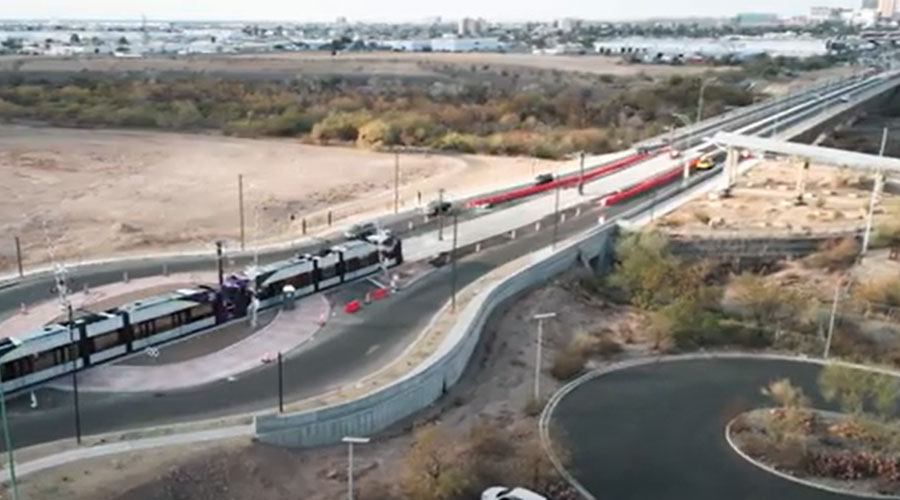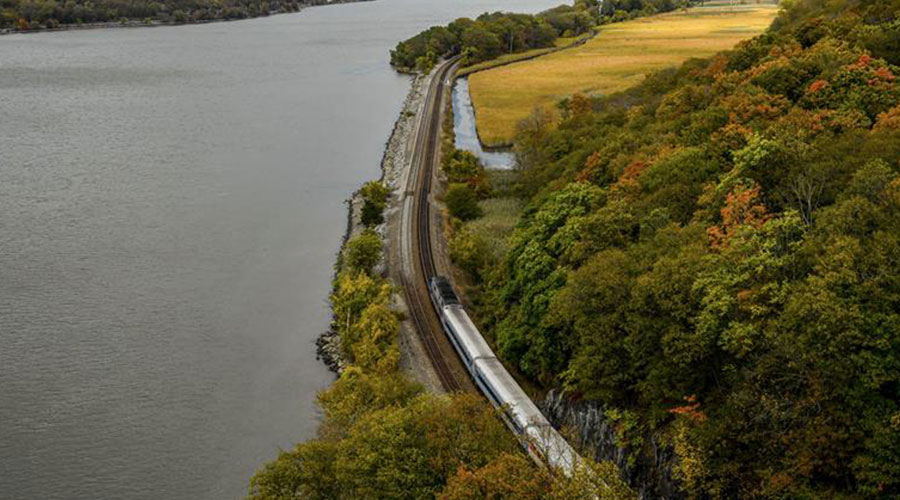Newsletter Sign Up
Stay updated on news, articles and information for the rail industry
Stay updated on news, articles and information for the rail industry
RAIL EMPLOYMENT & NOTICES
Rail News Home
Intermodal
Rail News: Intermodal
4/27/2004
Rail News: Intermodal
Pacer Stacktrain salutes 20 years of double-stack intermodal service
advertisement
Today, Pacer Stacktrain marked the 20th anniversary of double-stack intermodal transportation.
In 1984, railroads began moving intermodal trains with specially engineered rail cars designed to move two tiers of containers instead of one, which required less locomotive power and track capacity, and fewer workers compared with single-stack trains.
"Double-stack innovation began with equipment technology," said
Pacer President Tom Shurstad in a prepared statement. "Now, industry focus has evolved to an entirely different area of innovation — to improving global supply-chain efficiency through better process, information and collaboration."
Double-stack rail service helped increase North American containerized intermodal freight, which has grown three-fold since the mid-1980s, according to the Intermodal Association of North America.
"The double-stack alternative was more cost-effective than the basic container-on-flat-car, piggyback or truck for cross-country moves," said Ron Lefcourt, president of intermodal marketing company Alliance Shippers. "Double-stack service significantly reduced cargo damage and claims, and that helped us sell intermodal services to the skeptics."
Pacer International Chief Executive Officer Don Orris is considered the father of double-stack service. In the early 1980s, he sponsored the development and implementation of a stacktrain network while head of APL's intermodal department.
"Many intermodal veterans still remember the illustrated news stories that ran in those early days after Orris decided to demonstrate to customers how double-stack technology could reduce in-transit damage for fragile merchandise, such as electronics," said Shurstad. "He had us load up a container with a dinner table, all set with crystal, china and silverware, and rail it across the country. Everything arrived intact."
In 1984, railroads began moving intermodal trains with specially engineered rail cars designed to move two tiers of containers instead of one, which required less locomotive power and track capacity, and fewer workers compared with single-stack trains.
"Double-stack innovation began with equipment technology," said
Pacer President Tom Shurstad in a prepared statement. "Now, industry focus has evolved to an entirely different area of innovation — to improving global supply-chain efficiency through better process, information and collaboration."
Double-stack rail service helped increase North American containerized intermodal freight, which has grown three-fold since the mid-1980s, according to the Intermodal Association of North America.
"The double-stack alternative was more cost-effective than the basic container-on-flat-car, piggyback or truck for cross-country moves," said Ron Lefcourt, president of intermodal marketing company Alliance Shippers. "Double-stack service significantly reduced cargo damage and claims, and that helped us sell intermodal services to the skeptics."
Pacer International Chief Executive Officer Don Orris is considered the father of double-stack service. In the early 1980s, he sponsored the development and implementation of a stacktrain network while head of APL's intermodal department.
"Many intermodal veterans still remember the illustrated news stories that ran in those early days after Orris decided to demonstrate to customers how double-stack technology could reduce in-transit damage for fragile merchandise, such as electronics," said Shurstad. "He had us load up a container with a dinner table, all set with crystal, china and silverware, and rail it across the country. Everything arrived intact."


 2025 MOW Spending Report: Passenger-rail programs
2025 MOW Spending Report: Passenger-rail programs
 Gardner steps down as Amtrak CEO
Gardner steps down as Amtrak CEO
 Guest comment: Oliver Wyman’s David Hunt
Guest comment: Oliver Wyman’s David Hunt
 Women of Influence in Rail eBook
Women of Influence in Rail eBook
 railPrime
railPrime